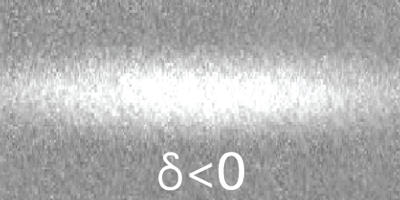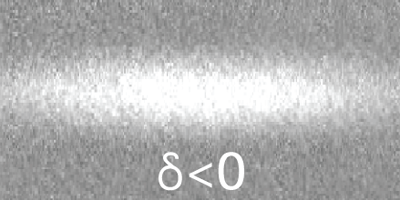Ephemeral Fermions
An important technique for manipulating cold-atom gases is to vary an external magnetic field through a so-called Feshbach resonance between the atoms. If the atoms are fermions, then on one side of the resonance, the interaction between atoms will be attractive, allowing them to pair up like the Cooper pairs in a superconductor. On the other side of the resonance, the interaction between the atoms is repulsive. Studying a gas of repulsive fermions could reveal new physics, but these gases are unstable because the fermions can lower their energy by forming dimers, which are bosons.
In Physical Review A, Ye-Ryoung Lee and colleagues at the Massachusetts Institute of Technology, Cambridge, report they have been able to preserve a gas of repulsive, fermionic lithium- 6 atoms long enough to measure a fundamental property: the compressibility of the gas. An essential part of their measurement is a new, dispersion-corrected phase-contrast imaging method, which interferes light scattered by the atoms with unscattered light and has enough sensitivity to accurately observe equilibrated density distributions of the atomic clouds within the short lifetime of the gas. This work paves the way for further investigations of strongly repulsive fermions formed with Feshbach resonances. As the authors suggest, measuring the spin susceptibility in a repulsive fermionic gas where there is a population imbalance (a difference between spin-up and spin-down atoms) could provide convincing evidence of novel magnetic phases, including a ferromagnetic phase transition for which predictions are controversial. – Franco Dalfovo





